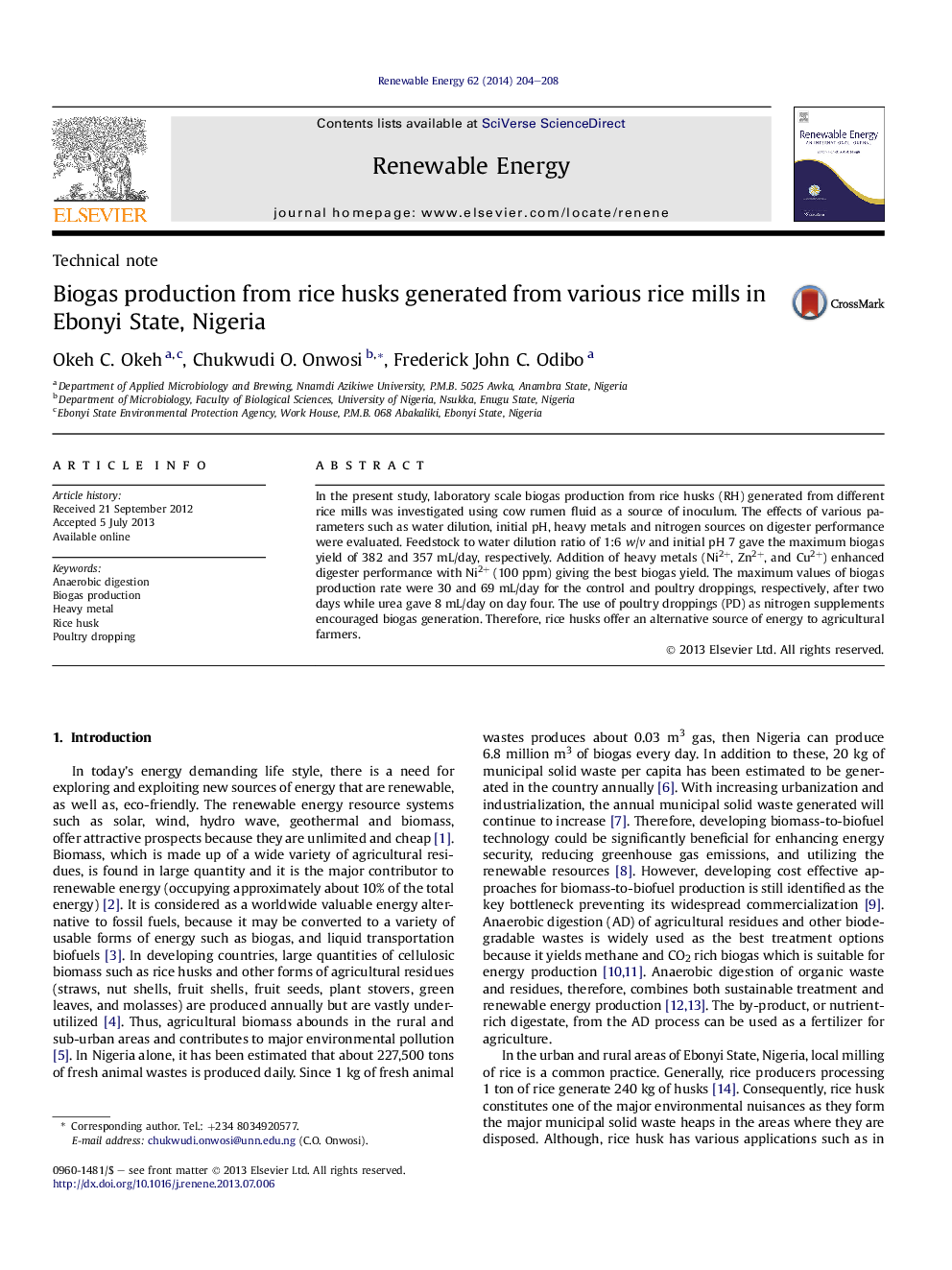| Article ID | Journal | Published Year | Pages | File Type |
|---|---|---|---|---|
| 6768763 | Renewable Energy | 2014 | 5 Pages |
Abstract
In the present study, laboratory scale biogas production from rice husks (RH) generated from different rice mills was investigated using cow rumen fluid as a source of inoculum. The effects of various parameters such as water dilution, initial pH, heavy metals and nitrogen sources on digester performance were evaluated. Feedstock to water dilution ratio of 1:6 w/v and initial pH 7 gave the maximum biogas yield of 382 and 357Â mL/day, respectively. Addition of heavy metals (Ni2+, Zn2+, and Cu2+) enhanced digester performance with Ni2+ (100Â ppm) giving the best biogas yield. The maximum values of biogas production rate were 30 and 69Â mL/day for the control and poultry droppings, respectively, after two days while urea gave 8Â mL/day on day four. The use of poultry droppings (PD) as nitrogen supplements encouraged biogas generation. Therefore, rice husks offer an alternative source of energy to agricultural farmers.
Related Topics
Physical Sciences and Engineering
Energy
Renewable Energy, Sustainability and the Environment
Authors
Okeh C. Okeh, Chukwudi O. Onwosi, Frederick John C. Odibo,
